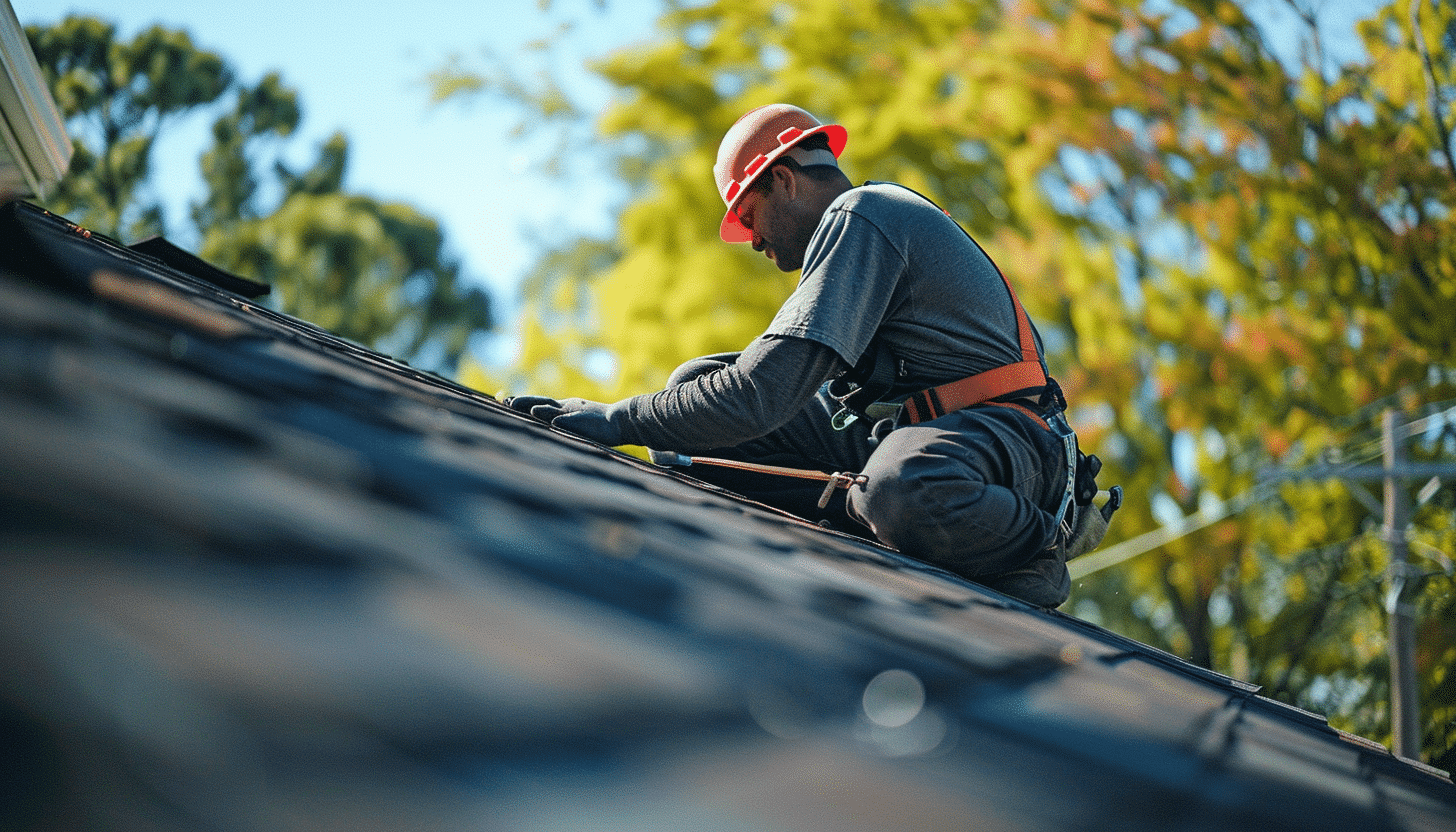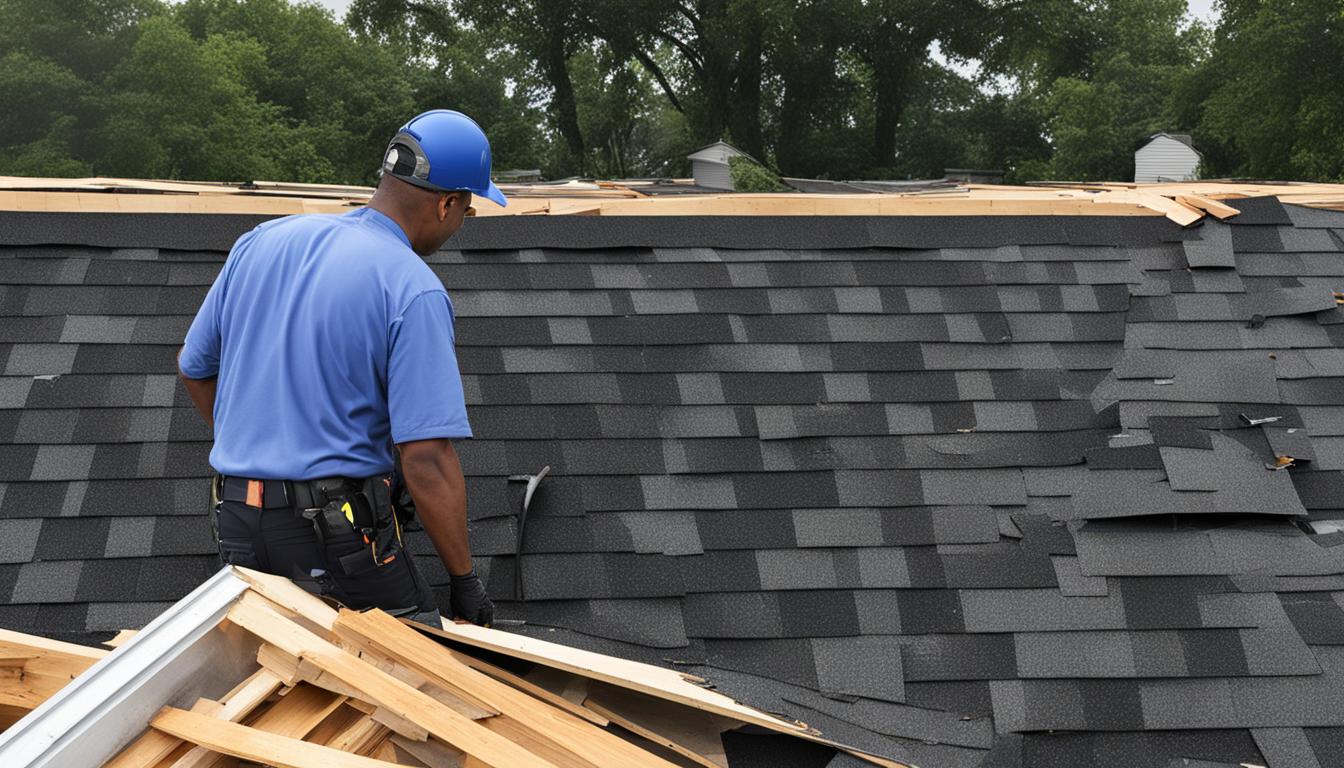Roof Damage? Know When to Replace
Roofs are the unsung heroes of our homes, protecting us from the elements and keeping our living spaces secure and comfortable. However, they don’t last forever. Over time, roofs can suffer damage that may necessitate a complete replacement. In this blog, we’ll explore the key signs of roof damage that indicate a full replacement is needed, the process involved, and how to choose the right roofing contractor for the job.
Understanding Roof Damage
Roof damage can occur due to various factors such as weather conditions, aging, and poor maintenance. Identifying the signs early can save you from more extensive and costly repairs in the future.

Common Causes of Roof Damage
- Weather Conditions: Severe weather events like storms, hail, and heavy rain can cause significant damage to roofs.
- Aging: Over time, roofing materials deteriorate, losing their effectiveness in protecting your home.
- Poor Maintenance: Neglecting regular roof maintenance can lead to minor issues escalating into major problems.
- Improper Installation: If a roof isn’t installed correctly, it can lead to premature wear and damage.
Signs That Roof Damage Warrants a Full Replacement
Knowing when to replace your roof is crucial. Here are the key indicators that roof damage warrants a complete replacement:
1. Extensive Leaks and Water Damage
- Persistent Leaks: If you notice persistent leaks in multiple areas of your home, it’s a clear sign that your roof’s integrity is compromised.
- Water Stains: Water stains on ceilings and walls indicate water infiltration, which often requires a full roof replacement.
2. Damaged or Missing Shingles
- Widespread Shingle Damage: When a significant portion of your shingles is cracked, curled, or missing, it’s time to consider a new roof.
- Granule Loss: Finding granules from your shingles in gutters is a sign of advanced wear and the need for replacement.
3. Sagging Roof Deck
- Structural Concerns: A sagging roof deck is a severe issue that can compromise the structural integrity of your home, necessitating a full replacement.
4. Mold and Mildew Growth
- Health Hazards: Mold and mildew growth due to roof leaks can pose health risks and indicate extensive water damage that may require a complete roof overhaul.
5. Energy Efficiency Issues
- Increased Energy Bills: If your energy bills are rising, your roof might not be providing adequate insulation, indicating the need for replacement.

The Roof Replacement Process
Replacing a roof is a significant undertaking, but understanding the process can help you prepare and ensure a smooth experience.
1. Initial Inspection and Estimate
- Professional Assessment: A qualified roofing contractor will conduct a thorough inspection to assess the extent of the damage and provide an estimate.
- Cost Breakdown: The estimate should include a detailed breakdown of costs, including materials, labor, and any additional expenses.
2. Choosing the Right Materials
- Material Selection: Depending on your budget and aesthetic preferences, you can choose from various roofing materials such as asphalt shingles, metal, tile, or slate.
- Durability and Warranty: Consider the durability and warranty of the materials to ensure long-term protection.
3. Preparing Your Home
- Protective Measures: Contractors will take measures to protect your property, including covering landscaping and moving outdoor furniture.
- Safety Precautions: Ensuring safety for both workers and residents during the replacement process is crucial.
4. Removing the Old Roof
- Tear-Off Process: The old roofing materials are removed, and the roof deck is inspected for any damage that needs repair before installing the new roof.
5. Installing the New Roof
- Underlayment: A protective underlayment is installed to provide an additional barrier against water infiltration.
- New Roofing Material: The new roofing material is installed according to the manufacturer’s specifications.
6. Final Inspection and Cleanup
- Quality Check: A final inspection ensures that the roof is installed correctly and meets all quality standards.
- Debris Removal: Contractors will clean up and remove any debris from your property.

Choosing the Right Roofing Contractor
Selecting a reputable roofing contractor is essential for a successful roof replacement. Here are some tips to help you choose the right professional:
1. Research and Referrals
- Ask for Recommendations: Seek recommendations from friends, family, and neighbors who have recently had roof work done.
- Online Reviews: Check online reviews and ratings to gauge the contractor’s reputation.
2. Verify Credentials
- Licensing and Insurance: Ensure the contractor is licensed and insured to protect yourself from liability.
- Certifications: Look for certifications from roofing manufacturers, indicating the contractor’s expertise with specific materials.
3. Get Multiple Quotes
- Compare Estimates: Obtain quotes from multiple contractors to compare pricing and services.
- Detailed Proposals: Ensure each quote includes a detailed proposal outlining the scope of work and materials used.
4. Check References
- Past Projects: Ask for references and contact previous clients to inquire about their experience with the contractor.
- Portfolio: Review the contractor’s portfolio of completed projects to assess the quality of their work.

FAQs About Roof Replacement
Q: How often should a roof be replaced? A: The lifespan of a roof depends on the materials used. Asphalt shingles typically last 20-25 years, while metal and tile roofs can last 50 years or more.
Q: Can I replace my roof myself? A: Roof replacement is a complex and dangerous task that requires professional expertise. It’s best to hire a qualified roofing contractor.
Q: What should I do if my roof is leaking? A: If your roof is leaking, contact a roofing contractor immediately to assess the damage and recommend repairs or replacement.
Q: How long does a roof replacement take? A: The duration of a roof replacement depends on the size and complexity of the project. Typically, it takes a few days to a week.
Q: Will my homeowners’ insurance cover the cost of a new roof? A: Homeowners’ insurance may cover roof replacement if the damage is due to a covered peril, such as a storm. Check with your insurance provider for details.
Conclusion
Roof damage can be a significant concern for homeowners, but recognizing the signs early and taking prompt action can prevent further issues. When roof damage warrants a full replacement, understanding the process and choosing the right contractor are crucial steps. By following these guidelines, you can ensure a successful roof replacement that protects your home for years to come.
For residents of Sugar Land, Texas, Sugar Land Roofing offers expert services for roof replacement, repair, and maintenance. With over 20 years of experience, they provide high-quality, reliable solutions to keep your home safe and secure. Contact Sugar Land Roofing for a free estimate and professional advice on your roofing needs.

 (832) 944-7663
(832) 944-7663